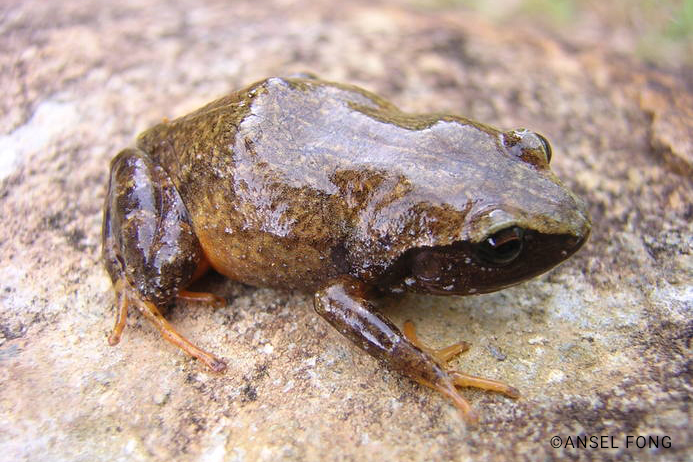About
The Critically Endangered Cuban dwarf robber frog is a small species, reaching around only 3 cm long, and the females are larger than the males!
The Cuban robber frog is one of more than 100 species comprising the diverse Eleutherodactylus genus. These species were previously considered part of an even larger genus containing more than 700 species, before it was split into several smaller genera in distinct families.
Though there is still much work to be done regarding the taxonomy of this large group of frogs, which is distributed across Latin America, it is thought they diverged from all other amphibians more than 50 million years ago. In evolutionary terms, this means these frogs are as distantly related to other amphibians as wolves are to tigers!
This species is listed as Critically Endangered by the IUCN Red List because the total area in which it occurs is less than 100km², its range is severely fragmented, and there is continuing decline in the extent and quality of its habitat. The Cuban dwarf robber frog is endemic to Cuba, and is found on Tuquino Peak, Sierra Maestra.
Severe habitat destruction is taking place as a result of clear-cutting, charcoal production, agricultural expansion, disturbance from tourism activities and infrastructure development for human settlement. Although its range is wholly within Parque Nacional Turquino and Parque Nacional la Bayamesa, these protected areas are in need of improved management.
- Order: Anura
- Family: Eleutherodactylidae
- Population: Uncommon
- Trend: decreasing
- Size: 33mm
EDGE Score
Distribution
This species occurs on Turquino Peak, Sierra Maestra, in Cuba, at 1,700 metres-1,974 metres above sea level.
Habitat and Ecology
This species lives in high-elevation closed-canopy moist forest and has not been recorded from disturbed forest. Eggs are laid on the ground and it breeds by direct development, meaning that offspring emerge from the eggs as miniature versions of the adults, and a free living larval stage is bypassed (there is no tadpoles phase).
